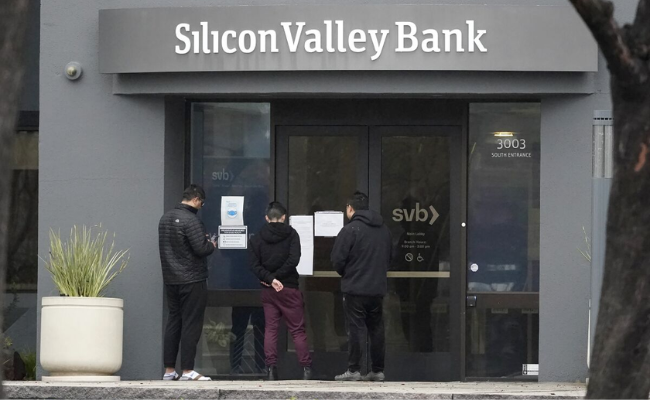6 Reasons Why Silicon Valley Bank Collapse Differs from 2008 Financial Crisis
Silicon Valley Bank (SVB), a leading US-based bank serving the technology and innovation industries, made headlines recently. News broke of its collapse.
Reports show that the bank’s risky lending practices and lack of proper risk management have left it in a precarious position.
The recent collapse has caused a ripple effect in the markets and sparked concerns about the banking system’s stability.
Many question whether this failure will lead to another financial crisis similar to 2007-2008.
A prominent hedge fund manager, Bill Ackman, has drawn parallels between SVB and Bear Stearns, the first bank to collapse during the previous crisis.
Silicon Valley Bank collapse: What you need to know https://t.co/jpIwJhyDfa pic.twitter.com/zwKqxyYVyW
— Reuters (@Reuters) March 14, 2023
He wrote on Twitter, “The risk of failure and deposit losses is that the next, least well-capitalized bank gets on a run and fails, and the dominoes continue to fall.”
Many experts believe that the collapse of SVB is an isolated incident. As a major lender to American tech startups, the bank faced difficulties.
These are because of the reduced funding available in Silicon Valley. Economic deceleration caused this and an abrupt surge in interest rates.
Jonas Goltermann, the deputy chief markets economist at Capital Economics, said, “[SVB is] in trouble because they have exposure to particular industries.” He added that most other banks are more “diversified.”
While some have drawn comparisons between the potential collapse of SVB and the 2008 financial crisis, several key differences set this situation apart.
1. Uncertain Lending Practices

Photo credit: LA Times
The 2008 financial crisis resulted from a subprime mortgage crisis, where lenders gave mortgages to borrowers who couldn’t afford them.
SVB’s alleged collapse, on the other hand, is caused by risky lending practices to tech startups that have a higher probability of defaulting on their loans.
2. The industries affected
The 2008 financial crisis affected the entire financial sector, including banks, insurance companies, and investment firms.
The collapse of SVB, however, would primarily affect the technology and innovation industries, as it is a bank that serves these sectors.
3. The size of the institution
While several large financial institutions failed during the 2008 crisis, Silicon Valley Bank is a much smaller bank with a market capitalization of around $9 billion. Therefore, the potential impact of its collapse would be limited to a smaller scale.
4. The regulatory environment
After the 2008 financial crisis, regulatory bodies such as the Federal Reserve and the Securities and Exchange Commission set stricter regulations to prevent a similar situation.
These regulations have made the financial system more resilient to shocks. However, there are concerns that the regulatory environment for tech startups is less robust, which could exacerbate the effects of a collapse of SVB.
5. The response of the government
During the 2008 financial crisis, the government implemented a massive bailout program to save failing financial institutions.
However, the government is unlikely to take similar measures for a smaller bank like SVB. Instead, the focus is likely on containing the fallout and preventing contagion.
6. The impact on the broader economy
The 2008 financial crisis significantly impacted the broader economy, causing widespread job losses and a recession.
While the collapse of SVB would undoubtedly have adverse effects on the technology and innovation industries, its impact on the broader economy is likely limited.
While there are some similarities between the potential collapse of SVB and the 2008 financial crisis, several key differences set the two situations apart.
It remains uncertain what the outcome will be for Silicon Valley Bank. But the potential impact would be less severe than the 2008 crisis.
However, lenders that cater to specific clientele may come under pressure. For example, Silvergate, specializing in crypto lending, announced on Wednesday that it would scale back operations because of recent instability in the digital asset market.
Fortunately, there is currently little concern about the possibility of widespread contagion.
A professor of finance at King’s College in London, Jens Hagendorff, said, “The banking system overall is in good shape and can withstand significant shocks. I think SVB is special because they have a fickle depositor base.”
Other institutions may also need to address similar concerns. Hagendorff explains, “Many institutions – from central banks, commercial banks, and pension funds – sit on assets worth significantly less than was reported in their financial statements.”
“The resulting losses will be great and need to be financed somehow. The magnitude of the problem is starting to cause concern.”
For more interesting news and articles, check out Inquirer.net.

